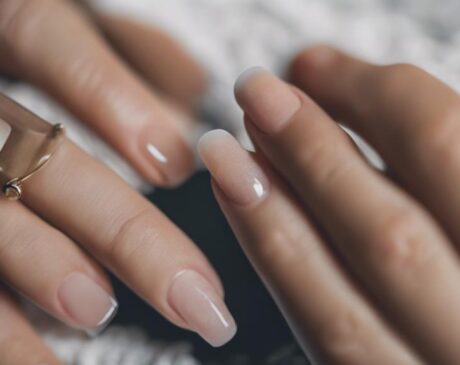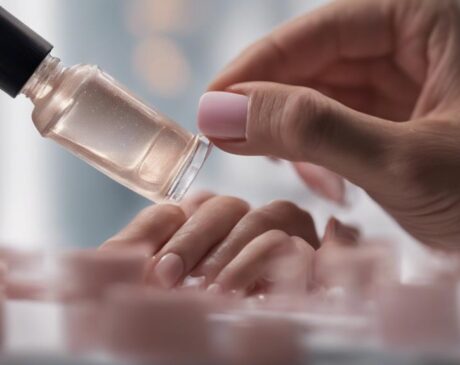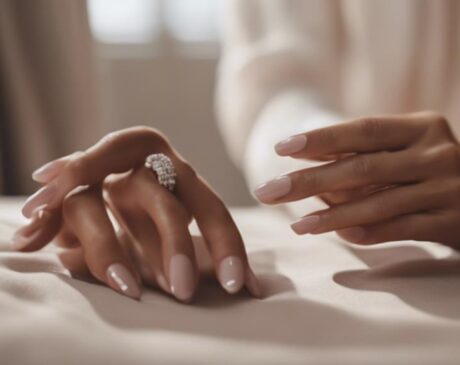Can You Shower With Press on Nails?
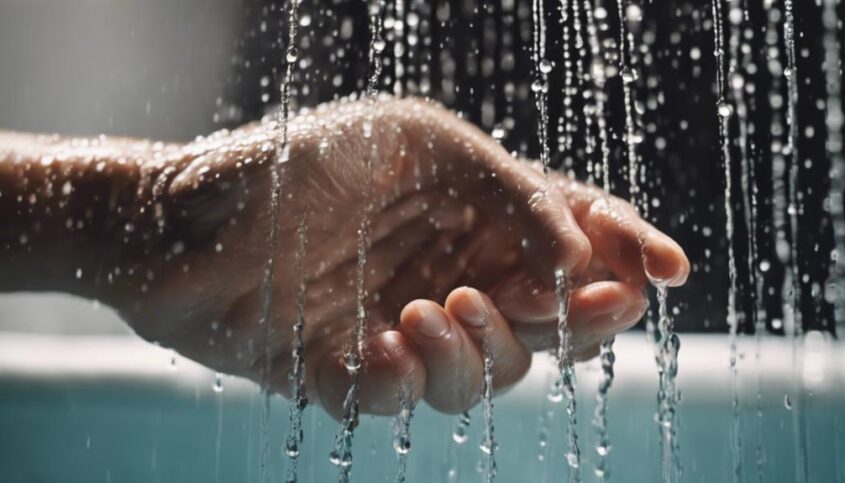
While showering with press-on nails is possible, precautions are needed to maintain quality. Water exposure can weaken adhesive and soften nails. Consider wearing waterproof gloves and applying nail oil for protection. Use high-quality adhesive and avoid hot water for better durability. Allow nails to air dry gently post-shower. Applying a top coat and avoiding harsh chemicals can extend wear time. By following these tips, you can enjoy press-on nails in the shower with ease.
Key Takeaways
- Waterproof press-on nails can withstand showers.
- Properly applied nails with quality adhesive resist water.
- Use caution to prevent weakening adhesion in the shower.
- Shorter showers and protective measures help maintain nails.
- Post-shower care like gentle drying and top coat application is essential.
Benefits of Showering With Press on Nails
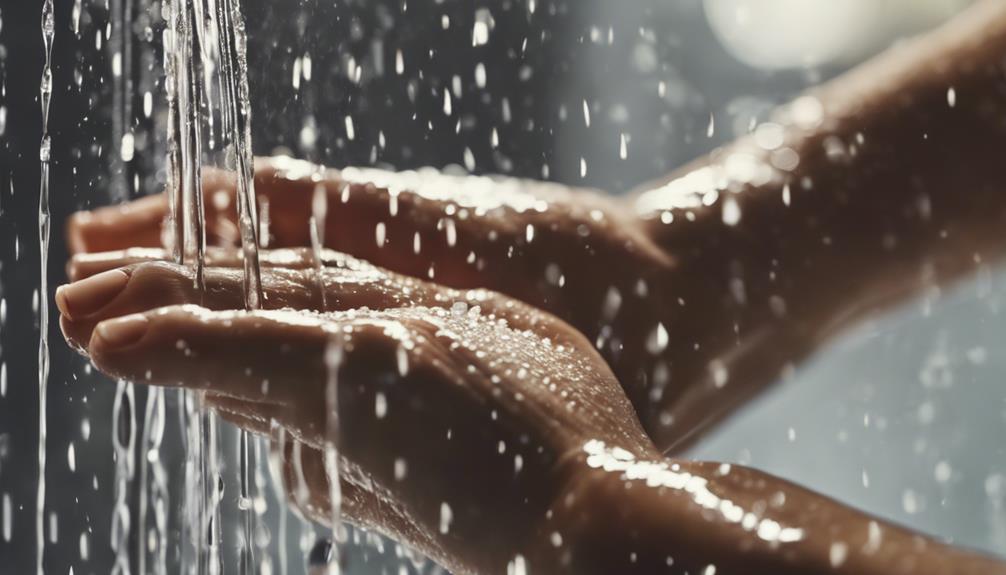
Showering with press-on nails offers the convenience of maintaining a polished appearance without the risk of traditional nail polish chipping or smudging. These modern nail solutions are designed to withstand water exposure, ensuring that your manicure stays flawless even during daily shower routines. Press-on nails come in a variety of designs, colors, and lengths, allowing for quick customization to suit any style preference. The ease of application and removal of press-on nails make them a practical choice for individuals seeking a time-efficient beauty routine.
Furthermore, showering with press-on nails can save both time and money by eliminating the need for frequent salon visits to touch up chipped or faded nail polish. The durability of press-on nails means that your manicure can last longer, maintaining its original vibrancy without the hassle of constant maintenance. Overall, the benefits of showering with press-on nails lie in their convenience, durability, and cost-effectiveness, making them a popular choice for those looking to enhance their nail aesthetics effortlessly.
Risks of Showering With Press on Nails
When wearing press-on nails, exposure to water during daily activities can pose certain risks to the longevity and appearance of the manicure. Water can weaken the adhesive used to attach the press-on nails, causing them to lift or peel off prematurely. Additionally, prolonged exposure to water can lead to the softening of the nails, making them more susceptible to damage or breakage. The moisture from showers can also seep underneath the press-on nails, creating a breeding ground for bacteria and fungi, potentially leading to nail infections.
Furthermore, hot water from showers can cause the nails to expand and contract, loosening their grip on the natural nails and increasing the likelihood of them falling off. The steam and humidity in the shower can also affect the overall durability of the press-on nails, causing them to lose their shape or color over time. To maintain the integrity of your press-on nails, it is essential to be mindful of these risks and take precautions to protect them during showering and other water-related activities.
Tips for Protecting Press On Nails in the Shower
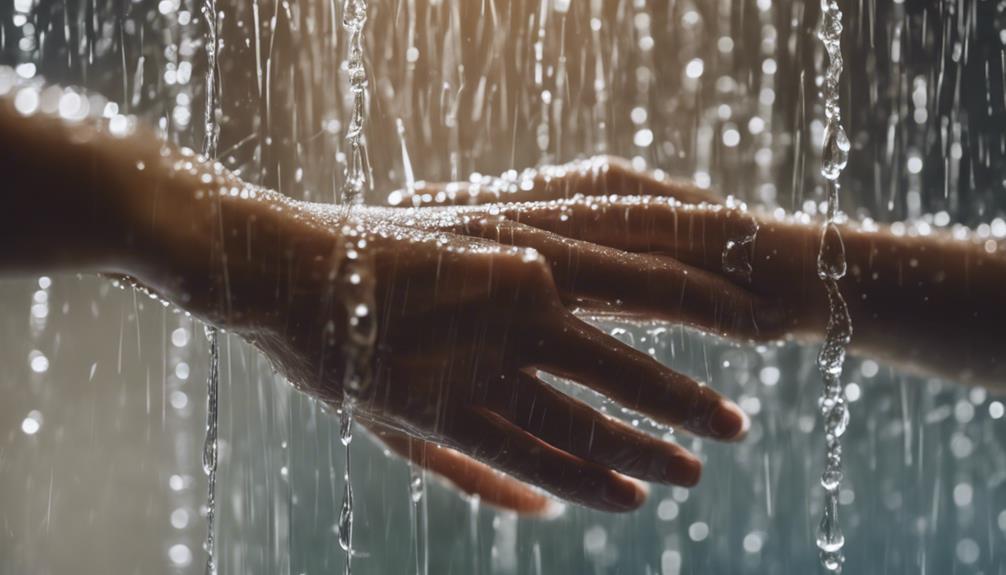
To maintain the longevity and appearance of press-on nails, it is crucial to implement protective measures while showering. Water exposure can weaken the adhesive and cause the nails to lift or lose their shape. Here are some innovative tips to help protect your press-on nails in the shower:
- Wear Waterproof Gloves: Invest in waterproof gloves to shield your nails from direct water contact. These gloves will keep your press-on nails dry and secure during your shower routine.
- Apply Nail Oil: Before stepping into the shower, apply a thin layer of nail oil around the edges of your press-on nails. This can help create a protective barrier against water seepage.
- Use Nail Glue: If you notice any loose edges before showering, reinforce them by applying a small amount of nail glue. This extra step can help prevent water from getting underneath the nails.
- Quick Showers: Opt for shorter showers to minimize the time your press-on nails are exposed to water. This can help prolong the wear of your manicure.
Waterproofing Your Press On Nails
When waterproofing your press-on nails, consider the strength of the nail adhesive used, as it plays a crucial role in keeping the nails intact. Exploring different sealant options can help provide an extra layer of protection against water exposure. Additionally, adjusting your showering frequency may also contribute to prolonging the lifespan of your press-on nails.
Nail Adhesive Strength
Ensuring optimal nail adhesive strength is imperative for effectively waterproofing your press-on nails. To achieve this, consider the following innovative strategies:
- High-Quality Adhesive: Invest in a premium nail adhesive that offers superior bonding strength.
- Proper Application Technique: Follow precise application instructions to maximize adhesive effectiveness.
- Nail Preparation: Ensure nails are clean and dry before applying press-ons to enhance adhesion.
- Adhesive Maintenance: Regularly check for any signs of lifting or weakening adhesive, and reinforce as needed.
Sealant Options
For enhancing the longevity and water resistance of your press-on nails, exploring various sealant options can offer a reliable solution. Sealants play a crucial role in protecting your nail art from water damage and ensuring it stays intact for longer periods. One popular sealant option is a topcoat specifically designed for press-on nails. These topcoats provide a protective layer that helps seal the edges of the press-ons, preventing water from seeping in and loosening the adhesive. Another effective sealant choice is nail glue, which can be applied around the edges of the press-ons to create an additional barrier against water. By carefully selecting and applying the right sealant, you can enjoy your press-on nails even during showers without compromising their quality.
Showering Frequency
To maintain the water resistance of your press-on nails, adjusting your showering frequency can significantly contribute to prolonging the durability of your nail art. Here are some innovative tips to help you maintain your press-on nails while showering:
- Quick Showers: Opt for shorter showers to minimize the exposure of your press-on nails to water.
- Use Waterproof Gloves: Consider wearing waterproof gloves while showering to protect your nails from excess moisture.
- Shower Caps: Utilize shower caps to shield your hands from direct contact with water during showers.
- Dry Nails Thoroughly: After showering, make sure to dry your press-on nails thoroughly to prevent any moisture-related damage.
Showering With Different Types of Press on Nails
Occasionally, showering with various types of press-on nails may require extra caution to maintain their durability and longevity. Different types of press-on nails, such as gel, acrylic, and matte finishes, have varying levels of water resistance. Gel press-on nails are generally more water-resistant compared to acrylic nails, which can be more prone to lifting or loosening when exposed to water for extended periods. Matte finish press-on nails may also be less resistant to water due to their texture.
When showering with press-on nails, it is advisable to keep the nails dry as much as possible. To prolong the wear time of press-on nails, it is recommended to avoid soaking the nails in water for prolonged periods, as this can weaken the adhesive bond. Additionally, using waterproof nail glue or nail adhesive tabs can help enhance the nails' longevity when exposed to water during showers. By taking these precautions, individuals can enjoy the convenience of press-on nails without compromising their durability in wet environments.
How to Properly Dry Press On Nails After Showering
Properly drying press-on nails after showering is essential for maintaining their adhesive bond and longevity. Neglecting this step can lead to premature lifting or loosening of the nails. To ensure your press-on nails stay intact and looking fabulous, follow these innovative drying techniques:
- Gentle Patting: After showering, avoid rubbing your nails vigorously with a towel. Instead, gently pat them dry to prevent unnecessary friction that could weaken the adhesive.
- Cool Air Blow-Dry: Use a cool setting on a hairdryer to gently blow-dry your nails. The cool air helps to set the adhesive while avoiding any heat damage that could compromise the bond.
- Air-Dry Naturally: If time allows, let your nails air-dry naturally. This method is gentle and ensures that the adhesive fully sets without any external heat or pressure.
- Avoid Harsh Chemicals: Refrain from using harsh chemicals or alcohol-based products on your nails immediately after showering. These substances can break down the adhesive and weaken its grip.
Maintaining Press On Nails Post-Shower
After showering, the care of press-on nails extends beyond just drying techniques to ensure their longevity and adhesive strength. Once you have dried your press-on nails thoroughly, consider applying a top coat specifically designed for press-on nails. This additional layer can help seal the edges and protect the adhesive from water damage, prolonging the wear time of your press-on nails. Additionally, it is recommended to avoid using harsh chemicals or abrasive products on your nails post-shower, as these can weaken the adhesive bond.
To maintain your press-on nails effectively, consider using cuticle oil or hand cream regularly. Keeping your nails hydrated can help prevent lifting and extend the life of your press-on manicure. Furthermore, avoid excessive exposure to water post-shower by wearing gloves when engaging in activities like washing dishes or cleaning. By implementing these simple yet innovative maintenance tips, you can enjoy beautiful and long-lasting press-on nails without compromise.
Common Mistakes to Avoid With Press on Nails in the Shower
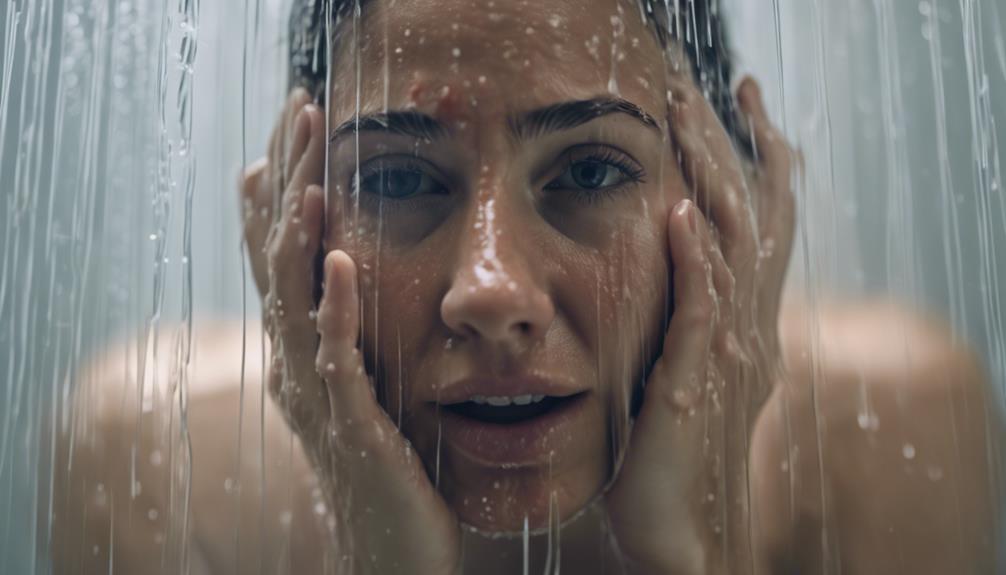
When showering with press-on nails, it is crucial to be mindful of certain common mistakes to avoid in order to maintain the integrity and longevity of your manicure. Here are some key errors to steer clear of:
- Using Hot Water: Hot water can weaken the adhesive of press-on nails, causing them to lift or fall off prematurely. Opt for lukewarm or cold water instead.
- Excessive Scrubbing: Vigorous scrubbing while washing your body or hair can put pressure on the nails, leading to loosening or detachment. Gently cleanse your body to protect your press-ons.
- Long Soaks: Prolonged exposure to water can cause the nails to absorb moisture and lose their shape. Keep your showers brief to preserve the quality of your manicure.
- Harsh Chemicals: Be cautious of harsh shower products like strong soaps or exfoliants that can degrade the adhesive. Use gentle, nail-friendly products to avoid damaging your press-on nails.
Frequently Asked Questions
Can You Swim With Press on Nails?
Swimming with press-on nails may compromise their adhesion. Water exposure, especially in chlorinated pools or saltwater, can weaken the glue. To maintain nail longevity, consider protective measures like waterproof sealants or nail wraps.
How Long Do Press on Nails Typically Last in the Shower?
Press on nails typically last in the shower for up to two weeks. Factors such as the quality of the adhesive and individual nail care routines can influence longevity. Properly applied press on nails can maintain their appearance and adhesion during regular showering.
Can Press on Nails Get Damaged From Hot Water in the Shower?
Press on nails can be damaged by prolonged exposure to hot water in the shower. The heat can weaken the adhesive, causing the nails to lift or peel off prematurely. It is advisable to protect them by using waterproof adhesives or gloves.
Do Press on Nails Require Special Maintenance After Showering?
Press on nails do not typically require special maintenance after showering. However, it is advisable to pat them dry gently to ensure longevity. Treat them like delicate flowers, and they will bloom beautifully for days to come.
Are There Any Specific Shower Products to Avoid When Wearing Press on Nails?
When wearing press on nails, it is advisable to avoid harsh shower products that contain acetone or other strong chemicals. These can weaken the adhesive bond of the nails, leading to premature lifting or damage.

